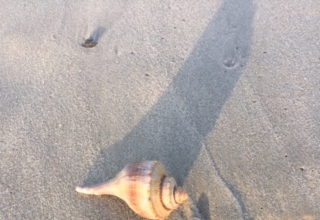
Conclusions
We wish to conclude by coming full circle and turning one more time to social neurobiology – for this field yields one additional challenge that should be addressed by all practitioners and teachers of personal and life coaching. Apparently, the neurochemistry associated with formation of intimate relationships is quite different from the neurochemistry associated with formation of friendships. In both cases, powerful, chemically-based bonds are formed and these bonds are reinforced whenever our intimate or our friend appears before us. But those bonds differ in nature. Our body literally “lights up” with one set of neuro-chemical responses when the other person is considered a friend, and a completely different set of neuro-chemical responses when the other person is an intimate.
It seems that the neuro-chemical reactions of a patient in psychotherapy (especially when it is long-term and depth oriented) more closely resemble the neuro-chemical responses of an intimate relationship rather than that of a friendship—and these neuro-chemicals are released in both the patient and therapist. The processes called “transference” and “counter-transference” may be something more than the replication of patterns and images from previous intimate relationships (including parents). These processes may involve the release of neuro-chemicals that are the same as those released in our intimate relationships.
What about the personal and life coaching relationship—is that more like a friendship than an intimate relationship? What if this form of coaching, like therapy, releases neuro-chemicals that replicate intimate relationships? What if coaching differs from psychotherapy by lighting up the friendship set of responses? Does coaching in an organizational setting light up the brains of coach and client in the same way as personal and life coaching (which can involve more intimate issues)? What about coaching that touches upon the spiritual dimensions of life—how does the brain light up when these issues are addressed? Stay tuned. We suspect that there is much to be learned over the coming decade about these matters – and predict that personal and life coaching will never quite be the same once we gain a clearer sense of how our clients (and we as coaches) operate and construct life over many years and in very complex, unpredictable and turbulent time.
__________
References
Bellah, Robert and Associates (1985) Habits of the Heart. Berkeley, CA: University of California Press.
Bergquist, William (2011) Managing Life Transitions: A Coaching Tool. Library of Professional Coaching, https://libraryofprofessionalcoaching.com/research/brain-behavior/managing-life-transitions-a-coaching-tool/
Bergquist, William (2011) Managing the Caffeine: A Coaching Tool. Library of Professional Coaching. https://libraryofprofessionalcoaching.com/tools/coaching-questions/managing-the-caffeine-a-coaching-tool/
Bergquist, William (2015) “The Development of Coaches Survey: I. Do Coaches Change and What Are Their Competencies,” Library of Professional Coaching. https://libraryofprofessionalcoaching.com/research/coaching-surveys/the-development-of-coaches-survey-i-do-coaches-change-and-what-are-their-competencies/
Bergquist, Willian and Gary Quehl (2016) Deep Caring: The Four Acts of Generativity (in preparation)
Blanchard, Ken and Johnson, Dewey, (2012), Management of Organizational Behavior (10th Edition), New York, Pearson.
Bridges, William (2004), Transitions. (25th Anniversary Ed.), Jackson, TN: De Capo Press.
Drake, David, Diane Brennan and Kim Gortz, (2008) The Philosophy and Practice of Coaching. Hoboken NJ: Wiley.
Dylan, Bob (1979) Gotta Serve Somebody, New York, Special Rider Music.
Eisenhower, Dwight, (1954) Remarks at the Annual Conference for Personnel Administration. Washington, DC, Eisenhower Archives.
Erikson, Erik, Joan Erikson and Helen Kivnick (1986) Vital Involvement in Old Age. New York: Norton.
Hudson, Frederick (1999) The Adult Years, San Francisco: Jossey-Bass.
Ives, Yossi and Elaine Scott (2014), Relationship Coaching, Florence, KY, Routledge
Kahneman, Daniel (2011) Thinking, Fast and Slow. New York: Farrar, Straus and Giroux.
Kimsey-House, Henry, Kimsey-House Karen, Sandhal, Phillip, and Whitworth, Laura (2011) Co-Active Coaching, Boston, Nicholas Brealey Publishing.
Kimsey-House, Henry and Skibbins, David, (2013) The Stake: The Making of Leaders, San Rafael, CA Coactive Press.
LeDoux, Joseph (1998) The Emotional Brain. New York: Simon and Schuster.
Olalla, Julio and Bergquist, William (2008) Interview with Julio Olalla. International Journal of Coaching in Organizations. No. 3.
Page, Scott (2011), Diversity and Complexity. Princeton, NJ: Princeton University Press.
Prevatt, Frances and Levrinni, Abigail, (2015) ADHD Coaching, Washington, DC, APA.
Rock, David and Linda Page (2009) Coaching with the Brain in Mind. Hoboken NJ: Wiley.
Sapolsky, Robert (2004) Why Zebras Don’t Get Ulcers. (3rd Ed.) New York: Holt.
Sieler, Alan (2005) Coaching to the Human Soul), Blackburn, Australia.
Skibbins, David (2000) Working Clean and Sober, Center City, MN, Hazelden Publications.
Skibbins, David (2007) Becoming a Life Coach, Oakland, CA, New Harbinger Publications.
Taleb, Nassim Nicholas (2010) The Black Swan: The Impact of the Highly Improbable. (2nd Ed.) New York: Random House.
Vaillant, George (2012) Triumphs of Experience. Cambridge, MA: Harvard University Press.
Williams, Patrick (2015) Border Line: Understanding the Relationship Between Therapy and Coaching. Library of Professional Coaching. https://libraryofprofessionalcoaching.com/applicationsuses/personal-life-coaching/border-line-understanding-the-relationship-between-therapy-and-coaching/
Download Article 1K Club


















Rey Carr
June 9, 2016 at 7:44 pm
Something about this article left me thinking that I missed the connection between coaching and any of the 10 items mentioned. For example, all the three points that neurobiology is allegedly responsible for in contributing to knowledge of human behaviour (and changing behaviour) were clearly known prior to the advent of the current craze to quote brain research. I don’t think that neurobiology has contributed at all to improving the coaching relationship. And as if to strengthen my point, the authors give no examples or evidence of how coaches have actually used these principles to make a difference in their interactions with clients.
The same holds true for the nine other trends mentioned. Cognitive psychology (via Jerome Bruner and others) as well as solution-focused work and the work of William Glasser and Albert Ellis and countless others are all cognitive approaches that turned traditional psychotherapy on its head and dumped it from working with dysfunctional individuals.
I wish the authors had provided more direct evidence of the way in which these trends have actually influenced the work of coaches.